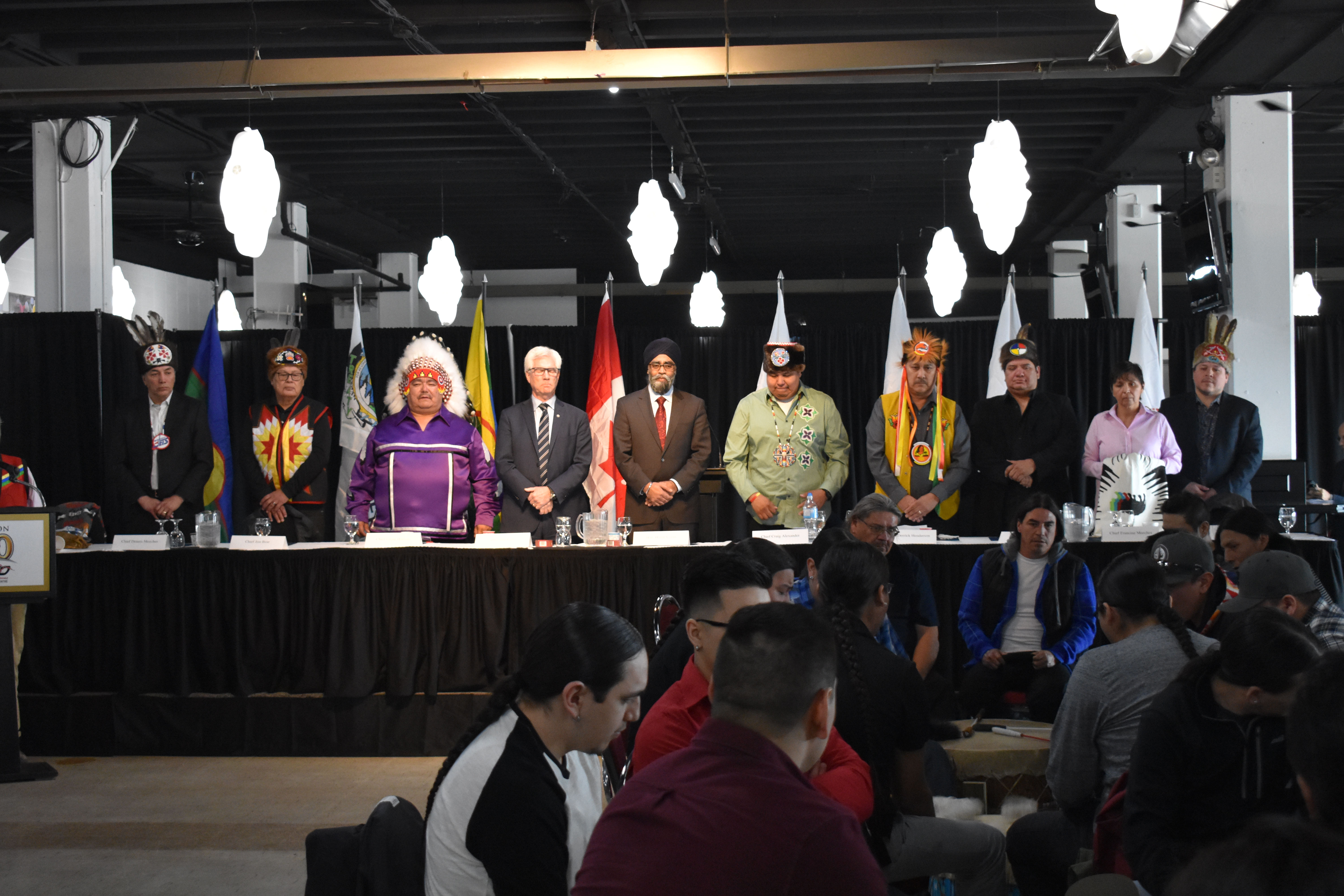No products in the cart.

Treaty 1 chiefs, federal government have ‘Agreement in Principle’ for Kapyong Barracks
After more than a decade of court wrangling and negotiation, the Government of Canada and Treaty One First Nations have reached an Agreement in Principle for Winnipeg’s Kapyong Barracks.
The announcement came from seven First Nations and Defence Minister Harjit Sajjan Wednesday morning.
“I am absolutely excited about it,” said Long Plain Chief Dennis Meeches on Tuesday. “It’s been a long time coming.”
Meeches spoke on behalf of six other Treaty 1 First Nations chiefs involved in the negotiations: Jim Bear of Brokenhead Ojibway Nation; Glenn Hudson of Peguis First Nation; Craig Alexander from Roseau River Anishinabe First Nation; Derrick Henderson of Sagkeeng First Nation; Lance Roulette of Sandy Bay First Nation; and Francine Meeches from Swan Lake First Nation.
The agreement is an important milestone and will be used to develop a Final Settlement Agreement, which “will include terms for the sale and future use” of the property, said Sajjan.
“This Agreement in Prinicple is the result of many years of negotiation and dialogue, and is an important milestone in transferring the Kapyong Barracks lands.”
One clear priority is Kenaston Boulevard. The city made plans in 2012 to widen Kenaston to six lanes, but it needs to acquire 30 parcels of the Kapyong site to do.
“For sure, it’s a priority for us,” said Meeches. “Probably our No. 1 priority.”
He hopes that negotiations with the city will begin soon.
In the meantime, demolition of buildings and infrastructure on site will continue by the Department of National Defense. The DND started demolishing homes on Kenaston Avenue earlier this year. Demolition is expected to take two years in two phases.
The DND says it’s too early to speculate on the future of the land.
The abandoned military base west of Kenaston at Grant Avenue has been sitting empty since 2004, when the 2nd Battalion Princess Patricia’s Canadian Light Infantry was moved to Canadian Forces Base Shilo, near Brandon, Man., and the Canadian Forces declared the site surplus.
The federal Treasury Board tried to sell the site to a Crown corporation, but the group of Treaty 1 First Nations challenged the decision, saying they had a right to the land under outstanding Treaty Land Entitlement claims.
It’s uncertain what the land is officially worth, but commercial real estate agent Joe Banfield estimated in 2015 the value could be between $65 and $90 million, depending on zoning and land use.
In 2009, Justice Douglas Campbell ruled the transfer illegitimate, siding with First Nations who said they weren’t adequately consulted.
The federal government appealed several times before then-prime minister Stephen Harper announced in 2015 that his government would no longer pursue an appeal.
While negotiations between the federal government and the Treaty 1 nations continued, last May the Department of National Defence began tearing down some structures on the property.
“We’ve come out of a very long, unnecessary journey,” Meeches said.
“A lot of this could have been achieved a long time ago, but obviously land claims are very, very complicated. It’s unfortunate it had to take this long. We’re hoping to move pretty quick on what the future holds for Kapyong.”
River Heights-Fort Garry Coun. John Orlikow, whose ward would be affected by the widening of Kenaston, said he was invited by Winnipeg South Centre MP Jim Carr’s office to Wednesday’s event, but won’t be able to attend due to a meeting of the city’s executive policy committee at 9 a.m.
“Looking forward to seeing what type of development is proposed,” he said.
-Article courtesy of CBC



